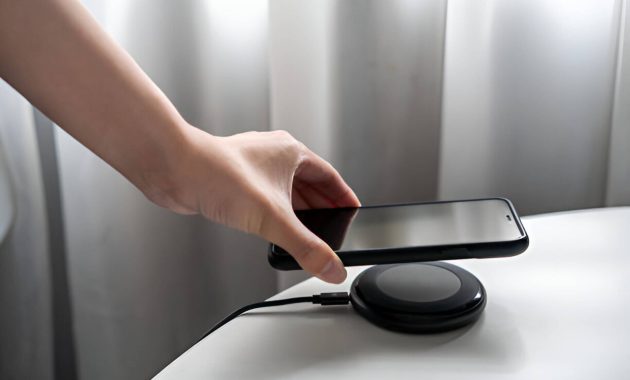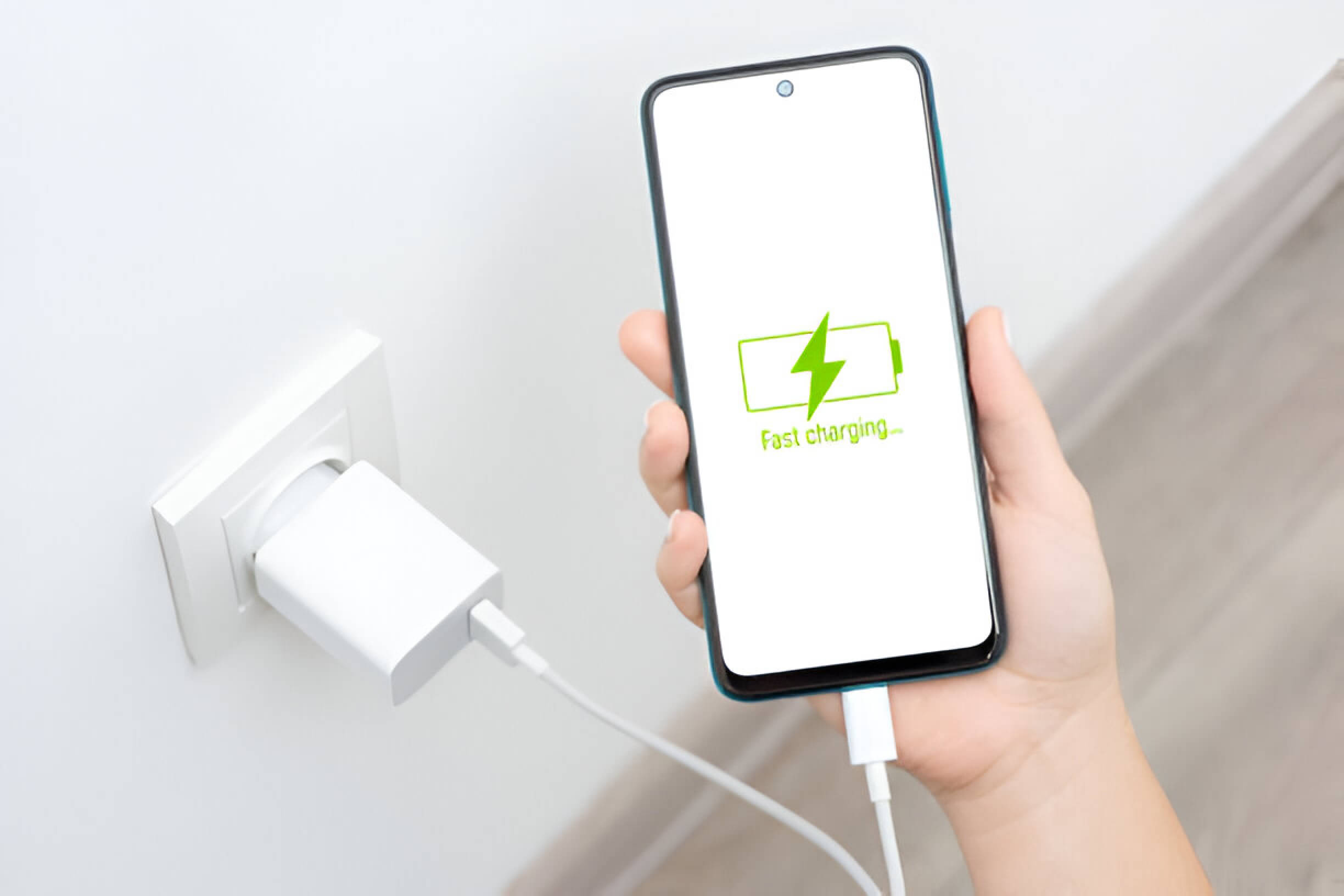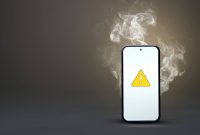In our fast-paced world, a quickly-charged phone can make all the difference. To optimize your charging experience, it’s essential to understand the fundamentals of phone charging and implement proven techniques. Here are nine effective methods to boost your phone’s charging speed:
1. Use the Right Charger and Cable
Select the appropriate charger and cable to secure your device’s battery health and ensure optimal charging performance. Always opt for the original charger with your device or a reputable third-party alternative that meets the manufacturer’s specifications. High-quality cables are equally important, as they can significantly impact charging speed and efficiency. By understanding the importance of these components and choosing the right ones, you can charge your device more effectively and protect its battery health.
When choosing cables, consider the connector type your device uses. Modern smartphones and tablets often feature USB-C ports, which offer faster charging and data transfer rates than the older micro-USB standard. If your device supports quick charging, invest in a compatible fast-charging adapter to take advantage of reduced charging times. However, it’s important to note that frequent use of fast-charging adapters may lead to a slightly faster battery degradation over time.
Remember that mismatched or low-quality chargers and cables can slow the charging process and damage your device’s battery or charging port. Low-quality chargers and cables may not regulate the power flow properly, leading to overheating and reduced battery life. Using the right combination of charger and cable will ensure safe, efficient, and optimal charging for your devices.
2. Enable Airplane Mode While Charging
Empower yourself with the simple yet effective strategy of enabling Airplane Mode while charging your device. This feature, which turns off all wireless connections, including cellular data, Wi-Fi, and Bluetooth, significantly reduces battery drain during charging. By eliminating these power-consuming functions, your device can focus its energy on replenishing the battery, potentially leading to faster charging times.
When Airplane Mode is activated, your phone does not constantly search for signals or maintain active connections. This can be particularly beneficial in areas with poor reception, where your device might otherwise expend extra energy trying to establish a stable connection. This reduction in background processes allows for a more efficient power transfer from the charger to your battery.
While using Airplane Mode while charging, it’s important to note that you will receive calls, messages, or notifications once you turn it off. However, the trade-off is a quicker charge, which is beneficial when you’re short on time and need to maximize your charging efficiency. Turn off Airplane Mode once your device is sufficiently charged to resume standard functionality.
3. Turn Off Your Phone or Use Do Not Disturb
Minimizing background processes and reducing screen activity is essential to maximize your phone’s charging speed. One of the most effective ways to achieve this is by turning off your phone completely or using the Do Not Disturb mode. When powered off, your device dedicates all available resources to charging, resulting in faster and more efficient charging.
If you prefer to keep your phone on, activating the Do Not Disturb mode can significantly optimize charging efficiency. This feature limits notifications, background app refreshes, and other power-consuming activities. By reducing these processes, your phone can focus more energy on charging, potentially decreasing the overall charging time.
Additionally, minimizing screen activity is crucial. The display is one of your device’s most power-hungry components. By keeping the screen off during charging, you allow more power to be directed towards replenishing the battery. If you must use your phone while charging, limit screen time and avoid power-intensive activities like gaming or video streaming.
Remember, the goal is to create an environment where your phone can charge quickly and efficiently. By implementing these strategies, you can ensure that your device spends less time tethered to a charger and more time ready for use.
4. Remove Your Phone Case
Removing your phone case can significantly improve heat dissipation and prevent overheating, enhancing your device’s charging speed. Phone cases, while protective, often act as insulators, trapping heat generated during the charging process. This accumulated heat can slow the charging rate and potentially damage your battery. Removing the case allows your phone to cool more efficiently, creating an optimal environment for faster charging. This simple step is particularly beneficial when using fast-charging technologies, as these generate more heat than standard charging methods. However, it’s important to note that removing the case can improve charging speed, so you should always handle your uncased phone with extra care to prevent accidental damage. Consider making it a habit to remove your case before plugging in, especially during longer charging sessions or when using high-power chargers.
5. Avoid Using Your Phone While Charging
To maximize charging efficiency and reduce power consumption, it’s advisable to avoid using your phone while it’s plugged in. When you use your device while charging, you’re essentially working against the charging process, leading to slower charging times and increased energy usage.
It is essential to minimize app usage while charging. Running multiple apps, especially resource-intensive ones, can generate heat and slow the charging process. This extends the time needed to charge your device entirely and puts additional strain on the battery.
Consider implementing screen-off charging whenever possible. Turning off your phone’s display or activating airplane mode during charging can significantly speed up the process. This approach lets your device focus on replenishing the battery rather than powering the screen and maintaining network connections.
By adopting these practices, you’ll charge your phone more efficiently and extend your battery’s lifespan, reducing the need for frequent replacements and minimizing electronic waste.
6. Update Your Phone’s Software
Keeping your phone’s software up to date is crucial for optimizing battery performance. Manufacturers regularly release updates, including bug fixes and charging improvements, which can significantly impact your device’s battery life. These updates often address known issues that may be causing excessive battery drain or inefficient charging.
Installing the latest software ensures your phone runs with the most recent optimizations and patches. This can lead to better power management, smoother performance, and enhanced battery health. Some updates may even introduce new battery-saving features or refine existing ones.
To check for updates, navigate to your phone’s settings and look for the “Software Update” or “System Update” option. Enable automatic updates so you can take advantage of essential improvements. Remember to connect your device to a stable Wi-Fi network and have it sufficiently charged before initiating an update to avoid interruptions.
7. Use a Wall Socket Instead of USB Ports
When charging your devices efficiently, opting for a wall socket instead of USB ports can make a significant difference. Wall sockets typically offer a higher power output than USB ports, resulting in faster device charging times. This is particularly beneficial for smartphones, tablets, and other power-hungry gadgets that require substantial energy to recharge quickly.
USB ports, especially those on computers or older charging hubs, often have limited power output. This can lead to frustratingly slow charging speeds, especially for devices with larger batteries. By contrast, wall sockets directly connect to your home’s electrical system, ensuring a consistent and robust power supply.
Use the appropriate charging adapter with your device or a reputable third-party charger designed for wall socket use to take advantage of this higher power output. These adapters are specifically engineered to convert the wall socket’s power efficiently and safely for your device.
Choosing a wall socket over USB ports can significantly reduce charging times and ensure your devices are ready to use when needed. This simple switch in your charging routine can lead to improved productivity and less time spent waiting for your gadgets to power up.
8. Invest in a Portable Battery Pack
In today’s fast-paced world, keeping your devices charged while on the move is essential. A high-capacity power bank is a must-have accessory for any tech-savvy traveler. These portable battery packs offer on-the-go charging solutions, ensuring your devices never run out of power at crucial moments.
When selecting a power bank, consider its capacity, measured in milliamp-hours (mAh). Higher capacity units can charge your devices multiple times before recharging themselves. Look for models offering at least 10,000mAh for smartphones and 20,000mAh for tablets and laptops.
Many modern power banks are fast-charging compatible, allowing you to juice up your devices quickly. This feature is handy when you’re short on time or need a quick boost between meetings or flights.
Some portable battery packs also have multiple ports, which charge several devices simultaneously. This can be a lifesaver when traveling with family or colleagues.
Remember to check the compatibility of your power bank with your devices and always carry the appropriate charging cables. With a reliable portable battery pack in your arsenal, you’ll never have to worry about running out of power while on the go.
9. Consider Wireless Charging Options

Wireless charging has revolutionized how we power our devices, offering a convenient and clutter-free solution. For those with Qi-enabled devices, investing in wireless charging options can significantly enhance your charging experience.
Fast wireless charging pads have become increasingly popular. They provide quick and efficient power delivery without the need for cables. These pads are compatible with a wide range of smartphones, smartwatches, and other Qi-enabled devices, making them versatile additions to any tech setup.
Consider factors such as charging speed, device compatibility, and design when selecting a wireless charger. Some models offer multi-device charging capabilities, allowing you to power up multiple gadgets simultaneously. Additionally, look for features like built-in cooling systems to prevent overheating during extended charging sessions.
By incorporating wireless charging into your daily routine, you can enjoy the convenience of simply placing your device on a pad to charge, eliminating the hassle of searching for cables or dealing with worn-out ports. This technology streamlines your charging process and contributes to a cleaner, more organized workspace or living area.










